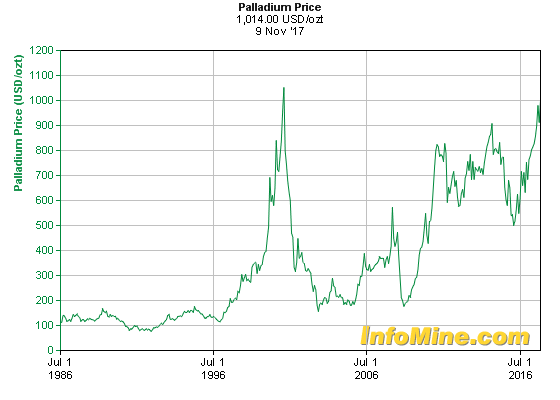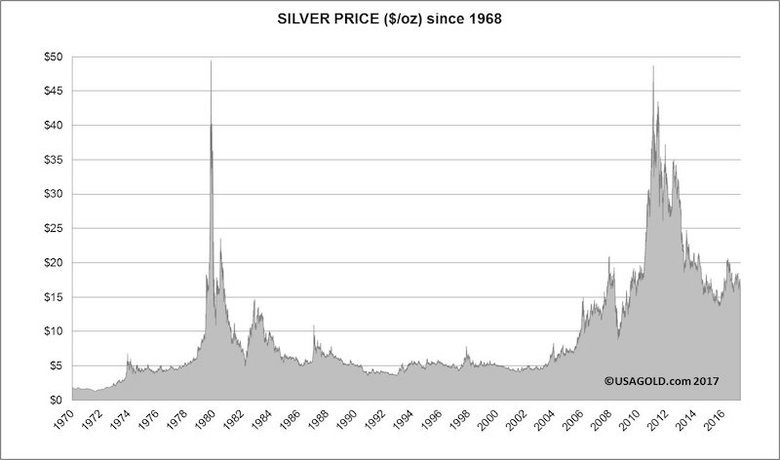$5000 To Spend On Comics..?4767
 Collector Collector
|
thelastbard private msg quote post Address this user | |
Quote:Originally Posted by DocBrown If we're going to get that specific, in Southern California, Aramark was doing magazine distribution for regional chain stores and newstands, not comic shops. I don't know where all they did in the country, but they were (and still are, I think) a fortune 500 company. They did strip covers as of 1995. I can't say after that point. |
||
| Post 51 • IP flag post | ||
 COLLECTOR COLLECTOR
|
Foghorn_Sam private msg quote post Address this user | |
Quote:Originally Posted by X51 Palladium is fairly rare and has numerous industrial applications (think catalytic converters, computers and of course cold fusion  |
||
| Post 52 • IP flag post | ||
 Collector Collector
|
X51 private msg quote post Address this user | |
Quote:Originally Posted by drchaos China has been hoarding rare earth metals. It's probably next to his mood ring. |
||
| Post 53 • IP flag post | ||
 Collector Collector
|
X51 private msg quote post Address this user | |
Quote:Originally Posted by Foghorn_Sam The Gold and Silver markets are manipulated by hoarders. Palladium, not so much. Platinum has always had a critical role as a catalyst. Palladium may also, but I don't think it's uses have been explored as much. A study reported that there is not enough copper in the Earth to industrialize China up to the level that the U.S. is industrialized. There is not enough Platinum on Earth to last 500 years at the rate it is being used. I think the reason you aren't seeing cars run on Hydrogen is that the cost of Platinum will skyrocket as a catalyst if they start mass producing fuel cells. That and storing the hydrogen has some technical issues because metals undergo a process change called Hydrogen Embrittlement. Anything you store Hydrogen in will become brittle over time. Regardless, I think there is a strong case to say that Palladium & Platinum should or could skyrocket due to their unique properties. Scientists are looking for cheaper alternatives. When you hear scientists talking about mining asteroids, the real things they want are water and rare Earth metals. The value of these is evidently perceived to be worth the expense of launching rockets into space. Environmental laws have curbed the mining of rare Earth metals in the US. China on the other hand has been stockpiling them and they have no environmental restrictions. |
||
| Post 54 • IP flag post | ||
 Collector Collector
|
X51 private msg quote post Address this user | |
Quote:Originally Posted by DocBrown Miller Daredevils might've ramped up higher than X-Men for awhile, but that's just a guess. |
||
| Post 55 • IP flag post | ||
 COLLECTOR COLLECTOR
|
Foghorn_Sam private msg quote post Address this user | |
Quote:Originally Posted by X51 I work in medical x-ray, and until the advent of digital imaging, x-rays depended on photographic film to create images; with the main component of image creation being a silver halide crystal emulsion. Back in the late 70's and early 80's there was a scare that silver mining and production was reaching exhaustion and soon there would be no more new silver. Of course silver prices skyrocketed. Now here we are almost 40 years later, there seems to be plenty of silver to go around, so I have to ask what happened? Were we really running out or was this just another example of market manipulation?  |
||
| Post 56 • IP flag post | ||
 Collector Collector
|
DocBrown private msg quote post Address this user | |
Quote:Originally Posted by X51 No, Miller wasn't on the book long enough for the market to react. #158-#175 or so are fairly difficult books to find compared to contemporaneous X-Men, and the really common books...#181-191...are just a short set. For example, #171? Good luck finding a 9.8. There are only 38 9.8s, including 3 SS copies. Compare that to X-Men #146, out the same month, and there are 288 9.8s...and #146 isn't a "book worth slabbing." And it only gets worse before that. When you compare an X-Men #141 (571 9.8s, 3857 total subbed ) with a DD #168 (177 9.8s, 3576 total subbed), and you really see the disparity between the two runs in high grade. As far as copies sold...DD #194 has 180k copies sold for the previous year, which would cover roughly #178-189, while X-Men #169, covering the same period, had 313k paid circ. Miller DDs never even came close. |
||
| Post 57 • IP flag post | ||
 Collector Collector
|
Drogio private msg quote post Address this user | |
| @DocBrown killing it with the stats! Can't argue facts! | ||
| Post 58 • IP flag post | ||
 Collector Collector
|
Logan510 private msg quote post Address this user | |
Quote:Originally Posted by Drogio To be fair, books subbed to CGC aren't an accurate reflection of anything other than the amount of copies subbed. The circulation numbers on the other hand cannot be argued. |
||
| Post 59 • IP flag post | ||
|
|
Beardown private msg quote post Address this user | |
| Buy the best copy of Tales of Suspense #39 you can afford and never look back. | ||
| Post 60 • IP flag post | ||
 Collector Collector
|
DocBrown private msg quote post Address this user | |
Quote:Originally Posted by Logan510 To be fair, that was the point. If someone thinks "the amount of copies subbed" means nothing, and has no implications beyond that, that person doesn't understand population statistics or why censuses exist. After all...the US Census isn't an accurate reflection of anything other than the amount of people the Census Bureau managed to get information about, voluntarily or not, and yet, all sorts of important decisions are made by it. To explain for you further: there aren't hundreds of unslabbed "9.8" copies of DD #168 hiding out there in collections, such that their numbers would ever achieve parity with X-Men #141. Sure, there will be additions made to the census, for various reasons, but that's also true of X-Men #141. What we know will NOT be true is that the census will "explode" for such books in the future. We have, after 18 years now, a clear idea of what exists for a lot of books, and in what general shape. There are 13,693 total copies of New Mutants #98 on the census. That number is going to change, but it's not going to double or triple (or centiquadragintiseptuple), like it did in the past, especially at such a rapid rate. As the census continues to expand, we get a clearer and clearer picture...the TENDENCY...of what exists, and in what grade. As with ALL statistics, it only shows TRENDS and TENDENCIES, and is not meant to be mathematically precise. What the census demonstrates is that there is a vast difference in the amount of high grade copies of each book (DD #168 and X-Men #141) in existence, despite having very comparable total numbers of copies submitted. What the circulation numbers show is why that might be the case. By the way, it's NOT accurate to say that the census is an "accurate reflection of...the amount of copies subbed." That's not correct. The only accurate thing about the census is that it is an accounting of grading events for any particular issue. For example: If Comic Book Y has 473 grading events recorded, that DOES NOT (necessarily) MEAN that there are 473 unique copies that were slabbed. It means that that issue has passed through the hands of the graders and encapsulators 473 times, even if it's just ONE copy 473 different times. Yes, that's not likely, but it's possible. The census DOES NOT reflect the amount of COPIES subbed: it only reflects the amount of times that issue (like Iron Fist #12), has appeared before CGC, regardless of how many unique copies OF that issue that number represents. Quote: Originally Posted by Logan510 Sure they can. Do you think those numbers are mathematically precise? Setting aside the fact that those are averages, all sorts of human error is involved that makes those numbers estimates, rather than mathematically precise figures. |
||
| Post 61 • IP flag post | ||
 Collector Collector
|
Doc_Cop private msg quote post Address this user | |
| From one Doc to another...I wish I had your time on my hands. To all the veterans out there, I salute you on this Veterans Day and to all the ones that made the ultimate sacrifice, thank you and God Bless. Nuff said. | ||
| Post 62 • IP flag post | ||
 Collector Collector
|
X51 private msg quote post Address this user | |
Quote:Originally Posted by Foghorn_Sam Silver & Gold are highly manipulated from what I've read. Supply is controlled which affects demand & price. |
||
| Post 63 • IP flag post | ||
 Collector Collector
|
X51 private msg quote post Address this user | |
Quote:Originally Posted by DocBrown At one point.... around issue #180, I was buying 6 copies each of Daredevil and I know a lot of other collectors were buying multiples also. I expect that X-Men did have a more reliable following for a longer period. In the 90's, when I got back into collecting I put some of my Daredevil duplicates into a trade I made for a Strange Tales #110. I sat there in amazement as the shop owner was perfectly willing to accept high print run 80's books towards a trade for a 1960's Marvel key. I walked out thinking "Yes!". |
||
| Post 64 • IP flag post | ||
 Collector Collector
|
X51 private msg quote post Address this user | |
Quote:Originally Posted by Logan510 Agree 100%, but a lot of collectors do use CGC submissions as a gage for comparison. On more popular & higher demand comics the numbers do carry some weight. How much is debatable. |
||
| Post 65 • IP flag post | ||
 Collector Collector
|
X51 private msg quote post Address this user | |
Quote:Originally Posted by Beardown I recall having a copy with tape on it and I sold it or traded it because I hate tape on comics. I still hate tape on comics, but I think I'd have kept it if I could go back and revisit my options at the time. |
||
| Post 66 • IP flag post | ||
 Collector Collector
|
DocBrown private msg quote post Address this user | |
Quote:Originally Posted by Doc_Cop You sure about that...? How much time do you think I have...? |
||
| Post 67 • IP flag post | ||
 Collector Collector
|
X51 private msg quote post Address this user | |
Quote:Originally Posted by DocBrown I'm not a statistics expert, but I have known some. I do know the importance and validity of statistics if used properly. My gut feeling is that there is a significant margin for error due to the lack of randomness in the sampling. If collectors were randomly sending in high grade comics from that time period, I feel that CGC submissions would be a very accurate statistical model. That is not being done. Collectors are choosing books that they think they can sell for a significant profit and you are going to see a higher number of popular books populating the CGC census. The numbers still have meaning, but I don't think it's a 1:1 correlation. |
||
| Post 68 • IP flag post | ||
 Collector Collector
|
DocBrown private msg quote post Address this user | |
Quote:Originally Posted by X51 What is "a lot of other collectors"...? What is that number, and how does it relate, say, to buyer behavior in the early 90's...? One thing is for sure: Miller DD numbers never even came close to X-Men numbers from the same time frame...and while DD numbers would plummet after Miller left in late 1982, X-Men would spend the next couple of years utterly dominating sales in the entire comics market. Besides, high print run 80's books, for HIGHER print run 60's books in potentially lower condition...? Many short-sighted people have made that bad decision for decades (including me!) The rule of thumb is: always trade newer for older, all other things being equal. |
||
| Post 69 • IP flag post | ||
 COLLECTOR COLLECTOR
|
conditionfreak private msg quote post Address this user | |
| "Speaking of "collectors"...I don't think you're acting as a collector when you're buying 6 copies of a book to trade for other things...you're acting as a speculator. But that's just a very minor quibble about terms. Nothing wrong with either, but you're not collecting 6 copies of DD #180 (or whatever) to own 6 copies...you're hoping to trade them for the stuff you DO collect." Wrong, and kind of right. But mostly wrong. |
||
| Post 70 • IP flag post | ||
 Collector Collector
|
DocBrown private msg quote post Address this user | |
Quote:Originally Posted by X51 You're looking at the argument from the wrong angle. The CGC census isn't a scientific survey, any more than the US Census is. It's not meant to be. The CGC census is not a random sample, true; but it's not meant to be, nor is it appropriate to use it as if it is. The very fact that submitters (I don't refer to them as "collectors", because that would exclude a whole host of people who submit and are not, themselves, collectors) choose what to submit gives us great insight into what is considered "worth submitting", and not just with regards to monetary value. Understanding that, first and foremost, the vast majority of submitters do so for financial considerations, and coupling that with sales data gleaned over the years from sites like GPA, and you find very steady, predictable patterns as to what is submitted, and why, and what it all means. I don't know what your "1:1 correlation" comment is referring to. Could you please explain? |
||
| Post 71 • IP flag post | ||
 Collector Collector
|
comic_book_man private msg quote post Address this user | |
| @tonnage71 anywho, it looks like this thread has shifted outside of comics, I hope we have given you some intriguing book ideas. | ||
| Post 72 • IP flag post | ||
 Collector Collector
|
Logan510 private msg quote post Address this user | |
Quote:Originally Posted by DocBrown I’m asking politely, please do not speak to me. Thank you |
||
| Post 73 • IP flag post | ||
 Collector Collector
|
DocBrown private msg quote post Address this user | |
Quote:Originally Posted by Logan510 I'm asking politely, please do not reply to comments I make, as you did in this very thread, post #59, quoted in this post. It's not reasonable for you to make a public issue of me "speaking" to you, while you feel free to comment about my comments whenever you wish. Thank you |
||
| Post 74 • IP flag post | ||
 Collector Collector
|
Symbiote private msg quote post Address this user | |
| @DocBrown Quote: Originally Posted by DocBrown Reminiscent of a certain member who rhymes with @Mowtater |
||
| Post 75 • IP flag post | ||
 Collector Collector
|
X51 private msg quote post Address this user | |
Quote:Originally Posted by DocBrown If you are not quoting the CGC census numbers in an attempt to determine a statistical representation of what's out there, then I don't see your point in mentioning them. I was giving you the benefit of the doubt. I feel that my "1:1" reference is self-explanatory. Essentially the books that collectors define as "worth submitting" skew any statistical (mathematical) evaluation of what's out there floating around in the hobby. CGC census may have 10 copies of a book listed. 10 copies may have been submitted because it's a character's 1st appearance and there are 500,000 copies out there. More people own high grade copies. 10 copies of another book may have been submitted because only 50 exist, and there was a warehouse find. There isn't a 1:1 correlation between the two. Both have demand, but the reasons for submitting are entirely different. |
||
| Post 76 • IP flag post | ||
 Collector Collector
|
X51 private msg quote post Address this user | |
Quote:Originally Posted by DocBrown For the record, I'm not disputing your claim that X-Men dominated the market in sales. I merely threw out conjecture that Miller Daredevil issues "might" have challenged X-Men's dominance for a few months. That's based upon 1st hand witness of what was going on at the time in comic shops. A "lot of collectors" would be a subjective evaluation based upon what the shop owners were ringing up at the time. I'd like to see the numbers for Daredevil #181 vs. what X-Men sold the same month. It's possible that newsstand sales gave X-Men a definite advantage. I still think it would be interesting to see exact numbers and not a yearly average. You are correct when you say this: "The rule of thumb is: always trade newer for older, all other things being equal." Obviously that is a guideline and it depends whether you are buying for short term gain or long term gain. I traded a short box of Valiant for an Amazing Fantasy #15. People ask me what the dealer was thinking. He had a $900 book sitting like a rock. People were only buying Valiant at the show and he was going to be leaving with no sales and travel expenses on top of that. I traded the short box of comics in the last hour of the show and he sold every one before the doors closed. I started buying 2 copies of comics before the word "speculation" ever floated around. I bought one to read and one to leave in minty condition. I wanted one that was touched as little as possible. Even when I bought 6 copies of Daredevil, I wanted 6 copies. I wasn't doing it to get rich. I just liked having multiples. I liked the odds of there being one that was better than any of the others. |
||
| Post 77 • IP flag post | ||
 Collector Collector
|
DocBrown private msg quote post Address this user | |
Quote:Originally Posted by X51 I think I've explained at pretty great length what the statistical use is, but I'll give it a shot again: the CGC census shows TENDENCIES. It gives us a general idea of what is out there, and the longer is exists, the more it is filled out, the better picture we have of what exists and in what general condition. Because of the general laws of economics and human nature, we know that people will TEND TO submit those books which have, first and foremost, monetary value. Because, as in all things, condition determines value more than any other factor besides identity itself (that is, a 1.8 AF #15 isn't worth more than a 9.8 Man of Steel #17, but a 9.6 AF #15 is worth more than a 1.8 AF #15), we know that the census TENDS to be top heavy: the less value a raw book has, the less likely it is to be submitted in lower grades. So, knowing that, we CAN make a statistical representation of "what's out there" under the parameters of the above. If you keep the above firmly in mind, many statistical representations can be made. You simply have to take your "random sample" from within the "non-random" sample. Statistically, DD #168 is rarer in 9.8 than X-Men #141, though they came out the same month, from the same publisher. We know that because, despite 18 years, several thousands submissions of each, and the fact that both books are "worth submitting" in that grade, the DD #168 is represented on the census in that grade in far fewer numbers. So, how do we interpret that data? Several ways: 1. We have to understand the disparity in sales between the two titles. 2. We have to understand the mentality of the buyers of the time period. 3. We have to understand the market history of the two books. 4. We have to understand the production issues, if any, which helped/hindered the production quality of these books. 5. We have to understand the collectability of both books; the reason why people are attracted to them. When we understand those things, we can form a valid interpretation for why the disparity in ultra high grade slabs exist...and it's not AT ALL "just because people like to submit high grade X-Men #141s more than DD #168s." And then rinse, wash, and repeat for other issues as warranted. Quote: Originally Posted by x51 I never made such a correlation, nor would I, which is probably why I didn't understand what you were referring to. In comics, there's no such thing as that "1:1 correlation", because every single book is unique. However, that doesn't mean a reasonable correlation can't be made, such as two books that come out the same month, from the same publisher. It's reasonable to correlate such books. |
||
| Post 78 • IP flag post | ||
 Collector Collector
|
DocBrown private msg quote post Address this user | |
Quote:Originally Posted by X51 That's fine, but it's not my claim: it's an established fact. Anecdote, as you know, is not a substitute for data. Again, the Statement of Ownership in DD #194 states that the average sales for DD #178-189 was 180k per copy; meanwhile, the SOO in X-Men #169, which came out the same month as DD #194, and covers X-Men #153-164 from the same time period (1982), was 313k copy, a nearly 75% higher sell-through rate. And this was during, which you and I agree on, the height of Miller's popularity on his first run, and the highest sales the title enjoyed in that time period. Some of the DDs *might* have outsold some of the X-Men, but it's doubtful, as those numbers are averages, and it's not really even close. Quote: Originally Posted by x51 I agree completely. One of the most frustrating things about the entire industry is its obsessive secrecy about print runs and sales. It's infuriating at times, because no one will give you a straight answer, even about data that's 40-50 years old. I'd love to see the numbers for DD #181, which came out the same month as X-Men #156, but I doubt it was really all that close. I suspect X-Men beat it handily...and neither title had the top selling comic of the year (that would go to Wolverine #1, if "reports" are to be believed.) Quote: Originally Posted by x51 Very true. The dealer didn't care about the "long term investment potential" of that AF #15; it was FOR SALE. He wanted to SELL IT. That's what a lot of people don't understand. It is only when you think in the long term that such trades start to make little sense...but if that dealer was smart, he turned that cash flow into even more cash flow, which generated more cash flow, which made him win, too. The only "losers" in that scenario were the buyers of the Valiant books, but if it made them happy, then they won, too. That's how an economic transaction can be good for everyone, without the need for someone to "win" and someone to "lose." Quote: Originally Posted by x51 That's what another poster didn't grasp: that there's a difference between being a collector who likes to have multiple copies of the same issue, and a speculator who is just buying multiple copies to trade. Yes, I get the point they were attempting to make, but that wasn't my point, as I said earlier. I own maybe 100 copies of Batman #442. Why? Because it was one of the "hot books" when I first started collecting, and I missed out on it. I bought #437, 438, and 439 off the racks, but #440 hadn't come out yet, and by the time I went back to the stores a few months later, it was too late. It was "for sale" at Fact, Fiction, and Fantasy in Livermore, CA for the low, LOW price of only $5! Five times cover price! No thanks. So, I buy it not because it's worth anything, or that I ever hope it will be worth anything, but to say "up yours!" to all the gougers who thought it was cool to price one of highest printed books of 1989 at five times cover price two months after it came out. I enjoy simply HAVING all those copies, just for the sake of having them. If they ever go up in price? Bonus! |
||
| Post 79 • IP flag post | ||
 Collector Collector
|
X51 private msg quote post Address this user | |
Quote:Originally Posted by DocBrown I think you should use the word "observation" instead of "statistics". You are describing a "gut feeling" based on numbers vs. a science that uses high level mathematics. Your response made me laugh. |
||
| Post 80 • IP flag post | ||
This topic is archived. Start new topic?

